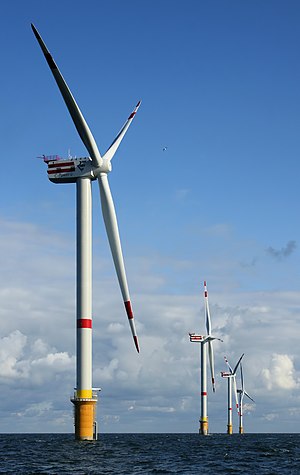Scotland’s devolved government launched an ambitious Zero Waste Plan on 9 June 2010. The
Zero Waste Plan aims to achieve waste recycling rates of 70 per cent with 5 per cent of waste going to a municipal landfill by 2025.
The UK has been considered as one of the laggards within the European Union, in terms of its efforts to promote waste recycling. Only two other EU member states – Greece and Portugal – have a worse track record when it comes to recycling waste. In the long term, this exposes Great Britain to the threats of landfill fines imposed by the European Union. In parallel with this, the export of UK waste to China for recycling also reduces opportunities for developing UK-based competency in recycling.
Within this context, the challenge for Scotland appears daunting. Its own track record over the past decade shows that 92 per cent of municipal waste was transferred to landfill during the period 2001/2002, reducing only to 63 per cent in 2008/2009. With a relatively small population size of 5.19m, the Scottish economy generated 20m tonnes of waste in 2008, of which 8.6m tonnes were attributable to construction sector activity. The rest of the commercial sector accounted for 7.6m tonnes of waste, with household consumption contributing 2.9m tonnes of waste.
This situation is exacerbated by the closure of landfill sites on the Shetland Islands and the Hebrides, whose municipal waste is now pre-treated and used to generate Energy from Waste (EfW) as part of their district heating scheme.
Zero Waste Plan
Scotland’s Zero Waste Plan is influenced by three main drivers:
•The European Union Waste Directive 2008/98/EC. This European wide policy instrument is aimed at developing a “recycling society” within the European Union, whereby waste prevention, recycling and waste recovery options are explored for their
environmental and economic feasibility. Landfill disposal is the least preferred option.
•The Climate Change Act (Scotland) 2009. This is an innovative legal instrument binding the Scottish Government to an 80 per cent reduction in greenhouse gas emissions by 2050, with an interim target of a 42 per cent reduction by 2020. Specifically, Part 5 of the Act requires the Scottish Government to initiate programmes to improve waste reduction. Waste in landfill sites releases hazardous methane gas, contributing to overall greenhouse gas emissions. The Scottish government is keen to apply carbon measurement techniques to help reduce the impact of waste on climate change, in addition to using traditional weight measures which are used to analyse its waste management performance.
•The Courtauld commitment. This is an agreement between government and the retail sector established in 2005 to reduce packaging, increase packaging recyclable content and improve packaging design by participants in the UK retail sector supply chain.
The philosophy behind Scotland’s Zero Waste Plan is rooted in the six steps of the Waste Hierarchy Model proposed in the EU’s Waste Directive (as seen in the box on the previous page).
Articulated in the Zero Waste Plan are initiatives to translate the broad philosophical approach of the Waste Hierarchy model into practical measures which are illustrated in the box below.
To implement its Zero Waste Plan, the Scottish Government is turning to the Scottish Environmental Protection Agency (SEPA) and the recently rebranded Zero Waste Scotland (formerly WRAP Scotland). The Sustainable Development Commission (SDC) also provided support to develop Scotland’s Zero Waste Plan. The latter’s role is now in doubt, however, as it has fallen victim to UK government fiscal austerity measures. In the absence of the Commission, it is envisaged that the Scottish Parliament and Audit Scotland will monitor the success of the Zero Waste Plan and the overall development of a sustainable economy in Scotland, although the effectiveness of this proposed arrangement is yet to be demonstrated.
Critical to the success of the Zero Waste Plan is the development of infrastructure to segregate and reduce the contamination of recyclable materials, such as contamination from food waste. This issue can be resolved through an increase in the composting of food waste, and consumer awareness campaigns encouraging individuals to see food waste as an importance resource. According to the Plan, waste materials could contribute 31 per cent of Scotland’s renewable heat target and 4.3 per cent of its renewable electricity target; but in order to make this happen, a shift in public attitudes is vital. Rather than waste being perceived as a liability, or an unavoidable consequence of consumption, it must be seen as an asset.
Waste management infrastructure developments such as aerobic and anaerobic composting sites, Mechanical Biological Treatment (MBT) facilities and Energy from Waste (EfW) schemes require a high level of capital investment, but they can contribute to long term economic growth and job creation. Initial projections indicate Scotland needs investment in waste management infrastructure of £1,046m above current levels, over the next 15 years, if it is to meet EU and Scottish Government waste reduction targets. A possible revenue option could be the redirection of costs incurred from the collection and disposal of waste, amounting to £404m during the period 2007 -2008. The onus is on businesses and households to help achieve this by reducing their own waste.
Improving the awareness of waste as a revenue source and its impact on the environment and human health has been a key programme of Zero Waste Scotland – the body mandated to implement the Scottish Zero Waste Plan. Through its partnerships with local councils and SEPA, Zero Waste Scotland has provided workshops, seminars, as well as consultancy support to encourage both individuals to change their attitudes to waste, and organisations to implement environmental management systems.
A recent waste awareness initiative conducted by Zero Waste Scotland showed the financial cost of cleaning litter on Scottish highways amounts to £100m annually, besides its environmental impact on the Scottish landscape and safety risk implications for litter collectors.
Legal framework
Scotland’s Zero Waste Plan provides business and society with a sustainable approach to development, but an intellectual appeal may not be enough. The Scottish Parliament is also backing up the programme through statutory instruments. The cornerstones of this future legal framework of waste management are found in the following proposed regulations:
Zero Waste Scotland Regulations 2011
Environmental Protection (Duty of Care) (Scotland) Regulations 2011.
•The introduction of the above regulations also necessitates amendments to the existing regulations, including:
•Environmental Protection Act 1990
•Waste Management Licensing Regulations 1994
•Pollution Prevention and Control (Scotland) Regulations 2000
•Landfill (Scotland) Regulations 2003
•Environmental Protection (Duty of Care) Regulations 1999.
•The Zero Waste Scotland Regulations 2011 will enshrine in law five key zero waste management goals:
•A landfill ban on key recyclable materials
•Bans on mixing separately collected recyclable materials
•The segregation, separation and collection of key recyclable materials
•Restrictions on the inputs to energy from waste processes
•A property-based ban on waste disposal of organic content to landfill.
Scotland has chosen to develop its Zero Waste Plan as part of a wider low carbon strategy for economic growth. However, if it is to achieve these waste management targets, and reap the rewards of both economic growth and job creation, it requires investment to upgrade its existing waste management infrastructure in an age of fiscal austerity. And that is only half of the battle: Scotland’s real challenge is to create a “Zero waste society” in which all its stakeholders participate in making “Scotland plc” a sustainable entity through the efficient use of resources.
Vital to the success of the Zero Waste Plan are the proposed Zero Waste Regulations which will provide a legal framework driving the implementation of sustainable approaches to waste management. The recent enactment of the Waste Information (Scotland) Regulations 2010 provides a clear indication of the intention of Scotland’s lawmakers to require the business sector to embrace sustainability. Scotland’s Zero Waste Plan was rolled out with little fanfare or hype, but its potential consequences for the way Scottish businesses currently operate are yet to be understood by Scottish CEOs and business leaders.
Six steps to “Zero Waste” Prevention
This is the cornerstone of Scotland’s approach to Zero Waste. Prevention includes any steps taken before a substance or material becomes waste, such as reducing the quantity of waste, product life span extensions, improved packaging and environmental and safety impact mitigation.
Re-use
This is the process of using products again for the same purposes for which they were initially designed.
Preparing for re-use
The cleaning and treatment of waste so that it can be re-used without further processing.
Recycling
Converting waste materials into products or substances for commercial or industrial use.
Recovery
Use of waste material as a substitute for other primary resources e.g. energy from waste schemes.
Disposal
Processing options which do not include the recovery of waste materials.
Waste Hierarchy Model, from the European Union Waste Directive 2008/98/EC
Waste hierarchy model
Prevention
• Implementation of Clean Technology, Eco-design and Best Available Techniques (BAT)
• Development of pertinent indicators, promotion of ISO 14001 and waste awareness programmes
Re-use
• Improve product durability
•Encourage the use of non disposable product alternatives
Preparing for reuse
•Development of reuse and repair networks
Recycling
•Implementation of carbon metrics and optimising the collection of recyclate (material that is capable of being recycled)
• Mandatory sorting of waste by commercial and industrial organisations
Recovery
• Institution of landfill bans for unsorted waste and restrictions on waste that is incinerated
• 25 per cent cap on local authority waste used for waste to energy schemes
Disposal
•Landfill reduction targets





















